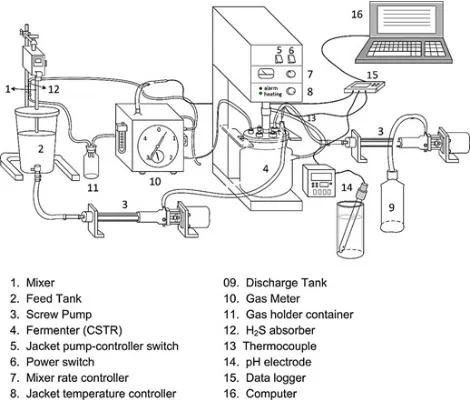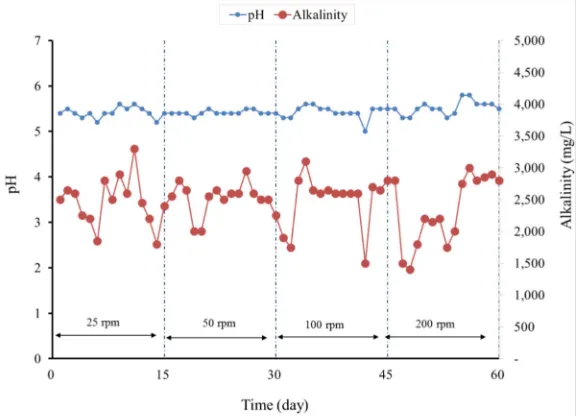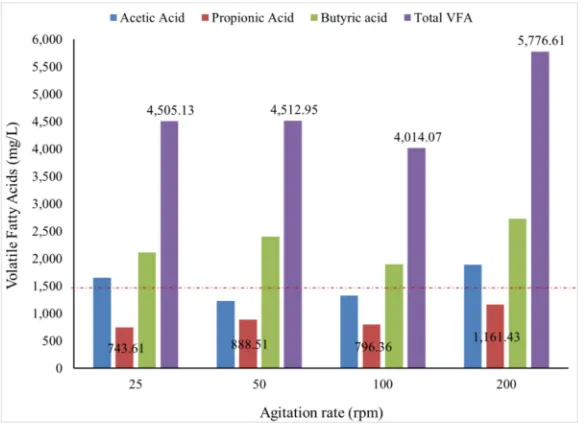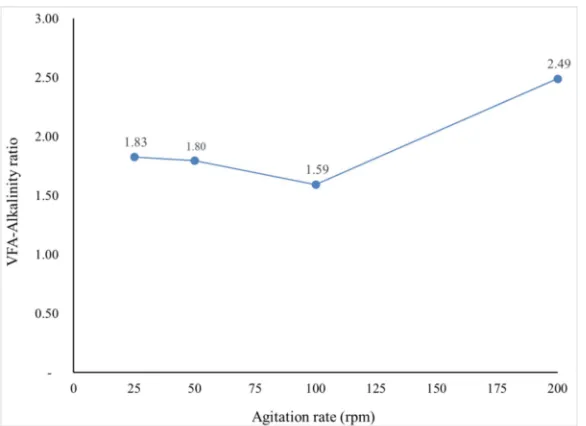Allsources 6 26 2 Internetsources 3 23 2 Owndocuments 110 Organizationarchive 33
[17] ejbiotechnology.ucv.cl/content/vol10/issue3/full/7/index.html 2
[21] https://pure.strath.ac.uk/portal/files/6...XIA_design_study.pdf 1
[33] https://www.scribd.com/document/35949129...r-Sci-Eng-180-012208 1
1.0% 4 matches
[34] toc.proceedings.com/18422webtoc.pdf 1
1.0% 2 matches
[35] "30.EnergidanLingkungan_Pembuata...ot;dated 2017-12-07 0.77% 3 matches
[36] https://www.scribd.com/document/34633360...r-Sci-Eng-180-012179 0.77% 3 matches
[37] iopscience.iop.org/article/10.1088/1757-899X/180/1/012254/pdf 0.77% 3 matches
[38] users.metu.edu.tr/goksel/environmental-biotechnology/pdf/179.pdf 0.88% 3 matches
2 documentswithidenticalmatches
[44]
0.66% 2 matches
[45]
https://123doc.org/document/2480252-nghi...i-duc-ha-noi-ttt.htm
0.77% 1 matches
1 documentswithidenticalmatches
[47] https://www.sciencedirect.com/science/article/pii/S0304389413004536 0.44% 2 matches
[48] https://www.scribd.com/document/329491095/Biodegradation-Flashcards 0.77% 1 matches
[53] repository.usu.ac.id/bitstream/handle/123456789/51464/Reference.pdf;sequence=2 0.66% 1 matches
[57] pierre.fkit.hr/hdki/cabeq/pdf/16_1_2002/Solera.pdf 0.44% 2 matches
[58] sith.itb.ac.id/wp-content/uploads/sites/56/2017/04/BeritaSITH-2017-1.pdf 0.55% 2 matches
[59] https://www.science.gov/topicpages/e/earlywarningradar 0.33% 1 matches
[60]
"3474-4533-1-SM.pdf"dated 2017-10-30
0.44% 1 matches
1 documentswithidenticalmatches
[62] "#530-Arifiyantoetal(ARPNJEAS)final.docx"dated 2017-07-10 0.33% 1 matches
[63] https://www.sciencedirect.com/science/article/pii/S0734975011001443 0.44% 1 matches
[64] https://researchbank.rmit.edu.au/view/rmit:6496 0.55% 1 matches
3 documentswithidenticalmatches
9 pages, 3 1 3 197 7 words PlagLevel: selected / overall
140matchesfrom 70sources,ofwhich 49areonlinesources. Settings
Datapolicy:Comparewithwebsources,Checkagainstmydocuments,Checkagainstmydocumentsintheorganizationrepository,Check againstorganizationrepository,CheckagainstthePlagiarismPreventionPool
Sensitivity:Medium
Bibliography:Considertext
Citationdetection:ReducePlagLevel
--IOP Conference Series: [33]Materials Science and Engineering
PAPER • OPEN ACCESS
Effect of Agitation on Acidogenesis Stage of
Two-Stage Anaerobic Digestion of Palm Oil Mill Effluent
(POME) into Biogas
To cite this article: B Trisakti [33] et al 2017 IOP Conf. Ser.: Mater. Sci. Eng.[18]180 012127
View the article online for updates and enhancements.
Related content [34]
Effect of Recycle Sludge on Anaerobic Digestion of Palm Oil Mill Effluent in A Thermophilic Continuous Digester Irvan, B Trisakti, Y Tomiuchi et al.
-[16]
Effect of temperature on methanogenesis stage of two-stage anaerobic digestion of palm oil mill effluent (POME) into biogas B Trisakti, Mahdalena Irvan, Taslim et al.
-[14]
Performance Evaluation on Otto Engine Generator Using Gasoline and Biogas from Palm Oil Mill Effluent
Irvan, B Trisakti, T Husaini et al.
-[18]
Effect of Agitation on Acidogenesis Stage of Two-Stage
Anaerobic
Digestion of Palm Oil Mill Effluent (POME) into
Biogas
B Trisakti*, Irvan, H Adipasah, Taslim and M Turmuzi
Chemical Engineering Department, Faculty of Engineering, University of Sumatera Utara[14]. Jalan Almamater Komplek USU Medan, 20155, Indonesia
Abstract.[17] The acidogenesis stage in two-stage anaerobic digestion of palm oil mill effluent (POME) was studied in a continuous stirred tank reactor (CSTR). This research investigated the effect of agitation rate on the growth of microorganisms, the degradation of organic substances, and volatile fatty acids (VFA) production and composition Initially, the suitable loading up was . determined by varying the HRT 6.7, 5.0, and 4.0 days in a 2 L CSTR with agitation rate 50 rpm, pH 6.0 ± 0.2, at room temperature. Next, effect of agitation on the process was determined by varying agitation rate at 25, 50, 100, and 200 rpm.[26]Analysis of total solids (TS), volatile solids (VS), total suspended solids (TSS), volatile suspended solids (VSS), chemical oxygen demand (COD), and volatile fatty acids (VFA) were conducted in order to study the growth of microorganisms and their abilities in converting organic compound to produce VFA. The highest growth of microorganisms was achieved at HRT 4.0 day with microorganism concentration was 20.62 mg VSS/L and COD reduction was 15.7%. The highest production of total VFA achieved was 5,766.61 mg/L mg/L at agitation rate 200 rpm, with concentration of acetic acid, propionic acid and butyric acid were 1,889.23; 1,161.43; and 2,725.95 mg/L, respectively. While degradation VS and COD were 16.61 and 38 79%..
1.[62]Introduction
Indonesia is currently the largest producer of palm oil in the world with a total production reached 33.5
million tons. Palm oil is produced from approximately 9.2 million hectares of oil palm plantations [1]. The process to extract oil requires significantly large amounts of water for steam sterilization of fresh palm fruit bunches (FFB) and clarification of extracted oil.[47] As a result, palm oil mill (POM) produces
large amounts of wastewater or commonly called palm oil mill effluent (POME). It is estimated in 2015
about 79.2-122.1 million tons or approximately 2.4 to 3.7 tons of POME was generated per ton of palm oil [2].
Fresh POME taken from fat pit of POMs are brownish viscous mud with temperatures around
80-[29]
90oC, acidic (pH 3.8 - 4.5), and the concentration of organic compounds is high enough so COD and
BOD of POME are also high [3]. POME contains large amounts of carbohydrates, protein, and fat with the composition 29.55, 12.75, and 10.21% respectively. In addition, there are also some macro and micro mineral compounds such as potassium (K), sodium (Na), calcium (Ca), iron (Fe), zinc (Zn), chromium (Cr), and others [4]. Therefore, POME can be utilized as substrates and nutrients for microorganisms in methanogenic anaerobic digestion for biogas production [5].
1
[28]
1st Annual Applied Science and Engineering Conference IOP Publishing
IOP Conf. Series:[28]Materials Science and Engineering 180 (2017) 012127 doi:10.[28]1088/1757-899X 1/ 80/1/012127
International Conference on Recent Trends in Physics 2016 (ICRTP2016) IOP Publishing
Journal of Physics:Conference Series 755 755 (2016) 011001 doi:10.[18]1088/1742-6596/755/1/011001
[18]
Content from this work may be used under the terms of the Creative Commons Attribution 3.0 licence.Any further distribution of this work must maintain attribution to the author(s) and the title of the work, journal citation and DOI.
Published under licence by IOP Publishing Ltd
POME as feedstock utilization of biogas through methanogenic anaerobic digestion process has been widely reported by the researchers. Furthermore, it has been applied at commercial scale of several POMs in Malaysia and Indonesia [6]. However, the hydraulic retention time (HRT) of the process is still high enough, so that high investment are needed to build this process [7].
In an effort to reduce HRT, many researchers separated the anaerobic digestion process into two stages namely acidogenesis and methanogenesis stage [8]. Therefore, to improve the effectiveness of this process, the optimum operating conditions such as pH, temperature, and agitation rate of each stage should be known [2,9,10].
A two-stage process of anaerobic digestion was conducted in this study. In the first stage, the organic compounds were converted into volatile fatty acids (VFA) by hydrolysis, acidogenesis, and acetogenesis (commonly referred as acidogenesis stage). Subsequently the VFA was converted into biogas through methanogenesis stage [11 15]. Environmental factors that influence the acidogenesis stages are –
substrate, inoculum, pH, temperature, and HRT [2,16,17]. Low pH and short HRT are conditions favored by acid-forming bacteria to grow and may inhibit the growth of microorganisms forming methane [18]. Therefore, control of HRT is needed to help multiply the microorganisms of hydrolysis and acidogenesis [19][19] and will increase the production of VFA [20].
Continuous stirred tank reactor (CSTR) is the most commonly digester used in methanogenic anaerobic process where the subtrate agitation in the digester is necessary in the formation of biogas [21]. The purpose of agitation is to enhance microorganisms and substrate contact and distribution, ensures uniform pH and temperature, prevents deposition of denser solids at the bottom and flotation of lighter solids at the top, and helps to release biogas bubbles. Therefore, this paper reported the effects of agitation rate on acidogenesis stage or the first stage of two stages anaerobic digestion in conversion of POME to biogas.
2.[20]Materials and Methods
2.1.[14]Materials
Fresh POME was collected from a fat pit of Adolina POM, Sumatera Utara, Indonesia, and stored in a
clean 1000 L container. It was transported to the laboratory, mixed well, put in 1-liter plastic bottles, and stored at 4 °C until further use.[17] Fresh POME characteristics are shown in Table 1. Acidogenic bacteria as starter were collected from acidification pond of WWTP of POM at Torgamba Sumatera
Utara, Indonesia. Sodium bicarbonate (NaHCO3) was used for adjusting the pH.
Table 1. Characteristics of fresh POME
Parameters Units Results Methods
pH - 3.70 4.70 –
Chemical Oxygen Demand (COD) mg/L 48,300 APHA 5220B
Total Solid (TS) mg/L 13,420 37,020 – APHA 2540B
Volatile Solid (VS) mg/L 10,520 31,220 – APHA 2540E
Total Suspended Solid (TSS) mg/L 2,080 27,040 – APHA 2540D
Volatile Suspended Solid (VSS) mg/L 1,920 25,800 – APHA 2540E
Oil and Grease mg/L 6.25 APHA 5520B
Protein % 0.53 Kjeldahl
Carbohydrate % trace Lane Eynon
2
1st Annual Applied Science and Engineering Conference IOP Publishing
2.2. Experimental Setup
The experimental setup is shown in Figure 1. The main equipment are feed tank (2), continuous stirred tank reactor (CSTR) as fermenter (4), screw pump (3), and discharge tank (9). The CSTR is EYELA model MBF 300ME made in Japan with working volume is 2 L. The fermenter was equipped with an integrated on-line temperature and pH data recording system. No pH adjustment was applied to the
fermenter. However, pH of the feed was controlled with sodium bicarbonate (NaHCO3), before it was
fed into the fermenter.
Figure 1. Experimental set-up
2.3. Data Collection
Data collected during the experiment were pH, alkalinity, TS, VS, TSS, VSS, COD, and VFA, in accordance to the American Public Health and Association standard methods (APHA) for water and wastewater [22][38]as presented in Table 2.
Table 2. Analysis methods of data collection
Parameters Units Methods
pH -
Alkalinity mg/L APHA 2320B
Total Solid (TS) mg/L APHA 2540B
Volatile Solid (VS) mg/L APHA 2540E
Total Suspended Solid (TSS) mg/L APHA 2540D
Volatile Suspended Solid (VSS) mg/L APHA 2540E
Chemical Oxygen Demand (COD) mg/L APHA 5220B
Volatile Fatty Acids (VFA) mg/L APHA 5560B
3. Results and Discussions 3.1. Effect of HRT reduction
Microbial adaptation and growth of the starter with VSS 8,060 mg/L were carried out by reducing the HRT or organic loading up. During loading up, a series of continuous experiments were conducted by
3
1st Annual Applied Science and Engineering Conference IOP Publishing
using various feed flow-rates of 298, 400, and 500 ml of POME per day, which relate to HRT of 6.7, 5.0, and 4.0 days. The fermenter was controlled at room temperature, and mixing rate 50 rpm. The pH was kept constant at 6 ± 0.2. The experiment was conducted in intermittent operation mode, where fresh feed and effluent where flown in every 4 hours or 6 times per 24 hours. pH, alkalinity, TS, and VS were analysed every day, while TSS and VSS were analysed in every three days, while the COD and VFA were analysed after the stable condition achieved. Results for organic loading up have been reported in detail [2].
The pH value slightly fluctuated but remained constant at 6, because the addition of sodium bicarbonate in the feed. As a result, large fluctuation in the value of alkalinity occurred, although it was still in the range where the acidogenesis process take place i.e. in the range of 542 3.580 mg/L [23,24]. –
The pattern of microbial growth is significantly influenced by the slightest change in pH during the process. The highest concentration of microbes achieved at HRT 4 days was 20,620 mg VSS/L, although this was the shortest HRT. The decrease of COD indicated the occurrence of microbial growth but the expected decrease COD is not too large, because the desired product of acidogenesis process is VFA.
3.2. Effect of Agitation on The Acidogenesis
Effect of agitation on acidogenesis process was studied by conducting a series of experiments by varying the agitation rate at 25, 50, 100, and 200 rpm, pH 5.5 ± 0.2, temperature of 55°C, and HRT 4 days. The experiment was conducted in intermittent operation mode, where fresh feed and effluent where flown
in every 4 hours or 6 times per 24 hours. The pH was maintained by adding sodium bicarbonate
(NaHCO3) in the feed. The pH, alkalinity, TS, and VS from the feed and effluent were analysed every
day, while the TSS, VSS, COD and VFA were analysed after the stable data was achieved. The results
of experiments are presented in a graph, showing the profile of pH and alkalinity, the growth of microorganisms, the degradation of organic substances, VFA production and composition, and the VFA-alkalinity ratio.
3.2.1. Profile of pH and Alkalinity during The Process The profile of pH and alkalinity during the proses are presented in Figure 2. The average pH at 25, 50, 100, and 200 rpm were 5.41 ± 0.12; 5.41 ± 0.05; 5.43 ± 0.14; and 5.52 ± 0.16, respectively. The pH was relatively constant at 5.5 ± 0.2 as expected
Figure 2. Profile of pH and alkalinity during the proses
4
1st Annual Applied Science and Engineering Conference IOP Publishing
The pH was maintained by adding sodium bicarbonate into the feed. Consequently, alkalinity profile fluctuated during the process but it was still in the range where the acidogenesis process take place i.e. in the range of 542 - 3580 mg/L [23, 24]. The average alkalinity value at 25, 50, 100, and 200 rpm were 2,466.67 ± 385.76; 2,513.33 ± 258.06; 2,518.75 ± 424.61; and 2,320.00 ± 544.06 mg/L respectively.
3.2.2. Effect of Agitation on the Growth of Microorganisms Microorganism growth is described by the
change of volatile suspended solid (VSS) concentration in the fermenter. Effect of agitation on
the VSS is presented in Figure 3.
Figure 3. Effect of agitation rate on VSS
The average values of VSS at 25, 50, 100, and 200 rpm were 2,466.67 ± 385.76; 2,513.33 ± 258.06;
2,518.75 ± 424.61; and 2,320.00 ± 544.06 mg/L, respectively which indicated that the number of microbes increased with increasing of agitation rate.
3.2.3. Effect of Agitation on the Degradation of Organic Substances Effect of agitation on microbial
activity can be observed from VS decomposition and COD removal during the process as presented on Figure 4. The average values of VS decomposition at 25, 50, 100, and 200 rpm were 16.61 ± 4.12; 16.82 ± 7.70; 15.62 ± 4.77; and 16.61 ± 6.11%, respectively. While the COD removal at 25, 50, 100, and 200 rpm were 28.80, 36.44, 20.22, and 28.79%, respectively, both indicating that the highest microbial activity was achieved at agitation rate 200 rpm.
3.2.4. Effect of Agitation on VFA production Effect of agitation on VFA production and composition
is presented in Figure 5. The highest VFA production was achieved at agitation rate of 200 rpm where the production of acetic acid, propionic acid, butyric acid, and the total were 1,889.23; 1,161.43; 2,725.95; and 5,776.61mg/L respectively. Although the production of propionic acid at 200 rpm was large i.e. 1,161.43 mg/L, but the value was still below 1,500 mg/L. According to [25], if the value of propionic acid is 1500 mg/L, then it will disturb the next stage (methanogenesis stage).
5
1st Annual Applied Science and Engineering Conference IOP Publishing
Figure 4. Effect of Agitation on VS Decomposition and COD Removal
Figure 5. Effect of agitation on VFA production
The effect of agitation on the VFA-alkalinity ratio is presented in Figure 6 where the highest ratio was achieved at agitation rate of 200 rpm i.e. 2.49. The VFA alkalinity ratio is to describe the stability of process acidogenesis where it is assumed stable if the VFA-alkalinity ratio is greater than one [25].
6
1st Annual Applied Science and Engineering Conference IOP Publishing
Figure 6. Effect of agitation on VFA-alkalinity ratio
4. Conclusions
The highest growth of microorganisms was achieved at HRT 4.0 day with microorganism concentration was 20.62 mg VSS/L and COD reduction was 15.7%. The highest production of total VFA achieved was 5,766.61 mg/L mg/L at agitation rate 200 rpm, with the concentration of acetic acid, propionic acid, and butyric acid were 1,889.23; 1,161.43; and 2,725.95 mg/L, respectively. While VS decomposition and COD removal were 16.61 and 38.79%, respectively.
Acknowledgment
This research was financially supported by Penerimaan Negara Bukan Pajak Universitas Sumatera Utara (PNBP USU) Fiscal Year 2016.
References
[1] Wright T and Rahmanulloh A 2016 Indonesia Oilseeds and Products Annual Oilseeds and Products Annual Report 2016
[2] Trisakti B, Manalu V, Irvan, Taslim and Turmuzi M 2015 Acidogenesis of Palm Oil Mill Effluent to Produce Biogas : Effect of Hydraulic Retention Time and pH Procedia - Soc. Behav. Sci. 195 (24)66–74
[3] Zinatizadeh A A L, Mohamed A R, Najafpour G D, Hasnain Isa M and Nasrollahzadeh H 2006
[17]
Kinetic evaluation of palm oil mill effluent digestion in a high rate up-flow anaerobic sludge fixed film bioreactorProcess Biochem.41 1038 46 –
[4] Salihu, A. and Alam M z. 2012 Palm oil mill effluent: a waste or a raw material J. Appl. Sci. Res.
[14]
8 466 73 –
[5] Seadi T A, Rutz D, Prassl H, Köttner M, Finsterwalder T, Volk S and Janssen R 2008 Biogas
[54]
Handbook Esbjerg: [54]University of Southern Denmark
[6][ Hosseini S E and Wahid M A 2013 Feasibility study of biogasproduction and utilization as a
39]
source of renewable energy in Malaysia Renew. Sustain. Energy Rev. 19 454–62
[7][ Yingyuad R 2007 Selection of Biogas Production System for Tapioca Starch Wastewater by
45]
Using Analytic Hierarchy Process (Shinawatra University)
7
1st Annual Applied Science and Engineering Conference IOP Publishing
[8] Jung J Y, Lee S M, Shin P K and Chung Y C 2000 Effect of pH on phase separated anaerobic digestion Biotechnol Bioprocess Eng 5 (45) 6 9 –
[9] Veeken A, Kalyuzhnyi S, Scharff H and Hamelers B 2000 Effect of pH and VFA on hydrolysis of organic solid waste (10) 76 81 6 –
[10] Polprasert C 2007 Organic Waste Recycling - Technology and management (London: Iwa Publishing)
[11] Blonskaja V, Menert A and Vilu R 2003 Use of two-stage anaerobic treatment for distillery waste Adv. Environ. Res 7 (6) 71–8
[12] Demirer G N and Othman M 2008 Two phase thermophilic acidification and mesophilic
[38]
methanogenesis anaerobic digestion of waste activated sludge environ Eng. Sci 25 (1) 291 300 –
bioconversion processes: A future paradigm Biotechnol Adv 29 (9) 72–82
[15] Wong Y S, Teng T T, Ong S A, Norhashimah M, Rafatullah M and Lee H-C 2013 Anaerobic
[34]
Acidogenesis Biodegradation of Palm Oil Mill Effluent Using Suspended Closed Anaerobic Bioreactor (SCABR) at Mesophilic Temperature Procedia Environ Sci 18 (4) 33–41
[16] He M, Sun Y, Zou D, Yuan H, Zhu B, Li X and Pang Y 2012 Influence of Temperature on Hydrolysis Acidification of Food Waste Procedia Environ. Sci 16 . 85 94 –
[17] Irvan, Trisakti B, Sosanty F and Tomiuchi Y 2016 Effect of Discontinuing Sodium Bicarbonate
[55]
on Fermentation Process of Palm Oil Mill EffluentAsian J. Chem. 28 377–80
[18] Solera R, Romero L I and Sales D 2002 The evolution of Biomass in a two-phase anaerobic treatment process during start-up Chem. Biochem. Eng. Q. 16 (2) 5 9 –
[19] Fang H H P and Yu H 2000 Effect of HRT on Mesophilic Acidogenesis of Dairy Wastewater J. Environ. Eng. 126 (114) 5 8 –
[20] Maharaj I and Elefsiniotis P 2001 The role of HRT and low temperature on the acid-phase anaerobic digestion of municipal and industrial wastewaters 76 (19) 1 7 –
[21] Lemmer A, Naegele H J and Sondermann J 2013 How efficient are agitators in biogas digesters? Determination of the efficiency of submersible motor mixers and incline agitators by measuring nutrient distribution in full-scale agricultural biogas digesters Energies (62) 556 –73
[22][ APHA 1999 Standard Methods for the Examination of Water and Wastewater (Washington, DC)
16]
[23] Senthilkumar M, Gnanapragasam G, Arutchelvan V and Nagarajan S 2011 Influence of hydraulic
retention time in a two-phase upflow anaerobic sludge blanket reactor treating textile dyeing effluent using sago effluent as the co-substrate Environ. Sci. Pollut. Res. 18 (6) 49 54 –





